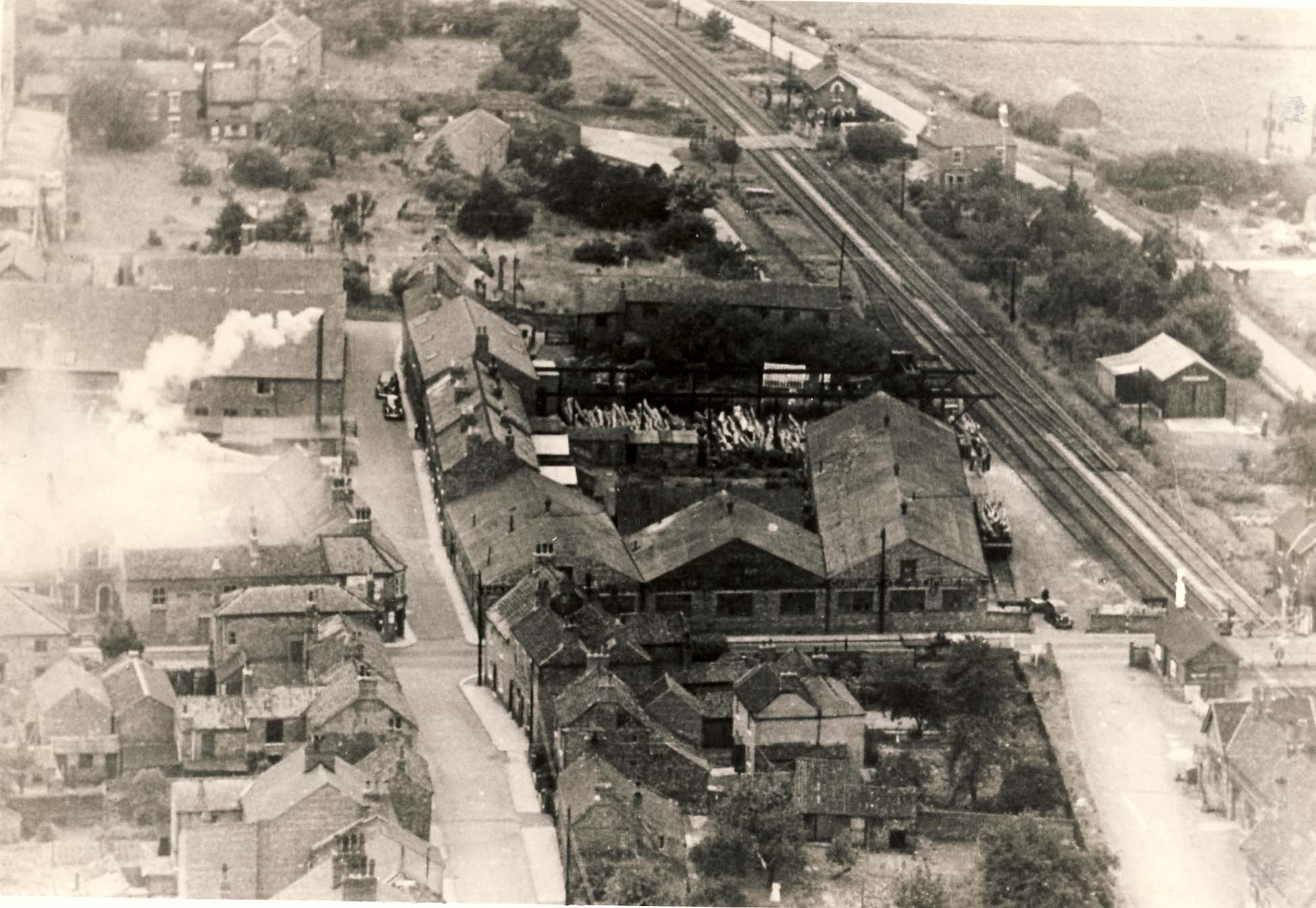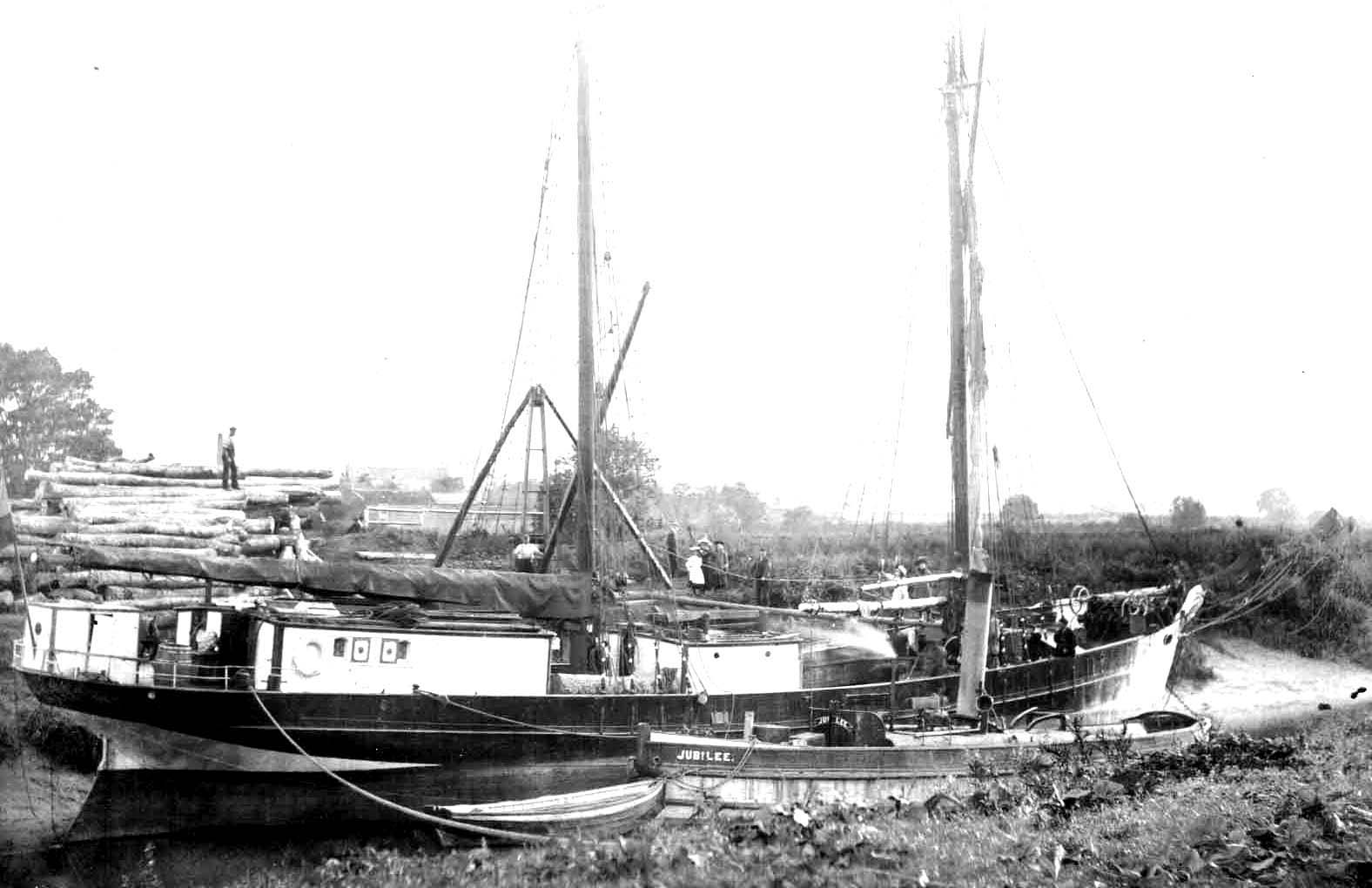SNAITH CLOG MILL
On 1st May 1900, Fawcett & Mathers purchased a site in Snaith. The site covered an area of 1.5 acres and consisted of Malt Kilns, a mill Office, A yard and 15 houses.
The Snaith Clog Sole Manufacturing and Steam Saw Mill Company Ltd was formed in 1903. The company name changed to British Clog Sole Manufacturers Ltd in 1910 and they were based in Snaith until the company went in to voluntary liquidation in 1967.
During the period 1840s to 1920s clogs were a very popular form of footwear in Britain. Ideal for wearing in factory conditions, they were also popular for every day wear as there were numerous styles to suit different occasions. Although less popular after the first world war, the Snaith factory was still producing around 12,000 pairs of soles a week in the mid 1920s. The second World War saw another rise in sales as a shortage of leather meant a shortage of traditional footwear. Two types of wood were used; Beech and Alder. Beech was ideal for outdoor use and in wet working areas as it was waterproof.
There were six major companies who manufactured clog soles, which they sold to clog makers. It was the clog makers who stitched the uppers on to the sole and produced as many as 21 different styles of clog.
THE PROCESS AT SNAITH.
STAGE ONE A consignment of Alder and Beech trees were delivered by rail to the mill yard. There was a dedicated siding off the main rail track. Alder soles were mainly for indoor work and Beech for outdoor.
Up until the first World War, some of the wood came by river. It was unloaded at Snaith Landing and then transported to the mill on a horse drawn wagon.
STAGE TWO The tree trunks were moved in to the saw room where they were sliced in to planks on a log band saw that traveled at ninety miles per hour.
STAGE THREE A pendulum saw then cut the planks in to a variety of sizes of blocks. This was because of the numerous sizes of clogs to be made. There were 22 different sizes, 8 for children, 4 for boys, 4 for women and 6 for men. You can see the 1939 prices for these sizes on the price list below. The heart was taken out of the wood (as it was useless for the clog soles on account of it not being waterproof). It was not wasted, instead sold to local coal mines for wedging the pit props.
STAGE FOUR A band saw was now used to cut out the shape of the sole. As with the size differences, there were quite a few different styles to be shaped. Any remaining pieces were used for making wooden handles for tools.
STAGE FIVE The cut out shapes were now moved in to the steam room in order to dry out all the sap. This was the longest process, taking up to eight hours.
STAGE SIX This is where the pieces of wood were expertly rounded, shaped and polished into the finished product as well as a channel being cut around the sole, to take the uppers. One worker would expertly create the shape, working entirely by the judgement of the eye. A second worker would operate a machine of whirring knives that hollowed the soles so that the foot would fit comfortably. A third worker would cut the heels.The soles were now placed in a tumbling wooden barrel along with pieces of paraffin wax and smaller pieces of wood. As the drum revolved the wax acted on the soles and the smaller pieces conveyed wax to the most inaccessible part of the soles.
STAGE SEVEN The finished products were stored in the warehouse, ready for shipment to the customers, by rail or road. With the variety of sizes and shapes to be made, there were well over 500 different soles in stock.
In the 1930s the Snaith factory created a dedicated handle department, making a variety of handles from wood left over from the clog sole production. They produced handles for garden shears, forks and trowels, joiners' chisels and saws, garden barrows, ploughs, lawn mowers, kitchen utensils, soldering irons etc,,etc.
The award winning British Clog Sole Manufacturing Ltd was ahead of its time in recycling its waste materials. As well as the handle department, they also sold waste beechwood by the ton in truck loads for firewood. Sawdust was sold to the fish sellers in Hull and Grimsby to be used in the curing of kippers. They also made and sharpened all their own saws
The one and half acre site, occupying buildings on either side of Mill Street, was self-sufficient for power and light. Gas was extracted from shavings and chippings to work two gas engines, supplying the mill with power and also driving a dynamo to provide electricity. They also had their own water supply, from a well in the cellar of the building on the oldest part of the site.
LOCAL ENTREPRENEURS
They were a community minded company and once a week they would give away off-cuts and sawdust to local children. Roy Lister was one of a group of young boys who collected off-cuts and sold them to their "customers".
ORIGINS OF THE OLDEST PART OF THE SITE.
The oldest building on the site dates from 1791 and was originally a Malt Kiln. During the 19th century it became a Corn Mill and then a Steam Saw Mill.
THE 1791 DATE MARK ON THE SIDE OF THE BUILDING IN MILL STREET SNAITH.
AN AERIAL VIEW OF THE SITE This aerial photograph shows the layout of the site.
If you are standing near the blue sign, you are in the bottom left hand corner of the building on Selby Road.
Note the wood stacked in the yard and the railway sidings which connected to the main line.

A FEATURE FROM THE LEEDS MERCURY DATED TUESDAY APRIL 15TH 1924
Picture 1 A consignment of Beech tree trunks in the rail sidings. Picture 2 The scene inside the saw room. Picture 3 Shaping the soles. Picture 4 The finished product.
.png)
THE WORDING OF AN ADVERT DATED 28 MAY 1924
Beech Firewood For Sale 15 shillings per Ton.
Truck loads only, Approx 5 or 6 Tons
Delivered by rail from Snaith Sidings
unlimited quantity for disposal
British Clog Sole Manufacturing Ltd Snaith.
PART OF A BOOKLET PUBLISHED 15TH SEPTEMBER 1939
.png)
The Clog Mill was the major employer in the town, employing both men and, from World War 1 onwards, women. There was a siren on the roof of the building, that could be heard throughout Snaith, when it blasted out at the start of each shift, six days a week. Local people set there clocks by this siren, finding it more reliable than the church clock. During World War II it was used as an air-raid warning siren.
HEALTH & SAFETY at The Clog Mill
Just like many other places of work in the early 20th century, Snaith Clog Mill could be a very dangerous environment. The two main factors would be the sawdust particles in the air and the unguarded sawing machinery.
It was said that you could tell if a man had worked on The Clog Mill saws by looking at his hands. The absence of one or more fingers was the clue.
One event involved JACK PUNTON (1913-1999), who founded the Punton DIY and Funeral Director business in 1956.
This is his story:
“ I was alone in the workshop one lunchtime and had turned off the machinery to repair a belt. Someone came in and switched it on
again. He hadn’t seen me. Without warning the belt began to move, and I found myself caught. As it twisted tighter and tighter around my arm, it also drew me towards the saw blades. I screamed. Eventually, the man realised what was happening and stopped the machinery- Just in time. It took over an hour to cut me free and I was off work for three weeks”. (Reprinted from “The House that Jack built” by Anne Punton).
Jack Punton started working at The Clog Mill at the age of 18 and was there for 6 years (1931-1937). Several other Punton family members worked there, including Jack’s mother and his elder brother Ted who was a foreman for many years up until the business closed.

A ship at Snaith Harbour with timber for The Clog Mill (early 20th century)
THE SITE FROM 1967 ONWARDS
The site was purchased in 1967 by WETHERELLS of Selby. The Wetherells family business was founded in 1898. In 1960 they started moulding plastic furniture for garden and leisure activities. By purchasing this site, they were able to increase their production and storage capacity.
In 1983 they launched The Old Mill Brewery in the oldest part of the site.
